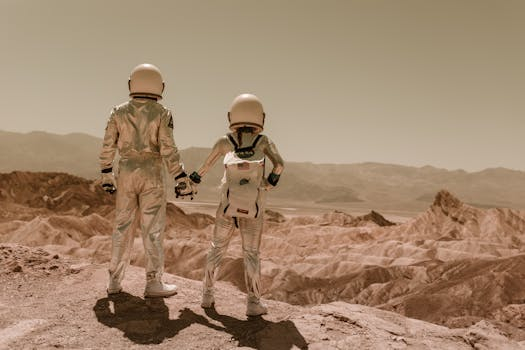Mars Colony Prototypes: NASA-Tested Rovers for Earthbound Adventurers.
As mankind sets its sights on exploring the depths of space and possibly colonizing other planets, the idea of a human settlement on Mars seems to be a popular topic. However, a major challenge in this endeavor is the harsh environment of the red planet. To overcome this obstacle, NASA has been tirelessly working on developing and testing various Mars colony prototypes, including rovers that will serve as the primary means of transportation for the future inhabitants of the planet. In this article, we will take a closer look at these NASA-tested rovers and explore their capabilities as we prepare for our ultimate journey to the red planet.
The Need for Mars Colony Prototypes
One of the biggest hurdles of establishing a human settlement on Mars is the planet’s harsh and unforgiving environment. The average temperature on Mars is a frigid -80 degrees Fahrenheit, and its atmosphere is mostly composed of carbon dioxide. The lack of oxygen in the atmosphere means humans cannot breathe without specialized equipment, making it impossible to survive on the planet’s surface without proper protection. This is where the importance of Mars colony prototypes comes into play.
These prototypes are designed to withstand the extreme conditions of Mars and provide the necessary support and resources for human life. They serve as the foundation for a sustainable human settlement and are critical to the success of any future Mars mission.
The Mars Exploration Rovers (MER)
The first NASA-tested rovers were the Mars Exploration Rovers (MER) – Spirit and Opportunity, launched in 2003. These rovers were designed to explore the Martian surface, seeking evidence of past water activity. These twin rovers were equipped with state-of-the-art technology, such as panoramic cameras, spectrometers, drills, and robotic arms, to collect and analyze samples from the Martian surface.
Reaching the planet in early 2004, the MER mission was initially planned for only 90 days. However, these rovers defied all odds and continued to function for more than a decade, sending back valuable data and images. The MER mission proved that rovers could successfully traverse the harsh terrain of Mars and withstand the planet’s unforgiving environment.
The Mars Science Laboratory Mission (MSL)
The success of the MER mission paved the way for the Mars Science Laboratory Mission (MSL), a more ambitious project with the primary objective of determining the habitability of Mars. The MSL rover, Curiosity, was launched in 2011 and arrived on the red planet in 2012. This rover is much larger and more advanced than its predecessors, with a nuclear power source, a laser-shooting instrument, and a sophisticated robotic arm.
The MSL mission is ongoing, and the Curiosity rover has made several significant discoveries, including evidence of past water bodies on Mars and the presence of organic molecules. These discoveries are vital in determining if Mars once had all the necessary conditions to support life.
The Next Phase – The Mars 2020 Mission
The next phase of Mars exploration is the Mars 2020 mission, which aims to further research the planet’s habitability and prepare for future human missions. This mission includes the Perseverance rover, the most advanced and efficient Mars rover yet. It will carry on the MSL’s work and also conduct new experiments, such as drilling and storing Martian samples for return to Earth.
The Perseverance rover is equipped with cutting-edge technology, such as the Mars Oxygen In-Situ Resource Utilization Experiment (MOXIE), which will test the possibility of creating oxygen from the Martian atmosphere. This will be a crucial step in the potential colonization of the planet as the availability of oxygen would greatly reduce the cost of resources needed for human life.
Preparing for an Earthbound Adventure on Mars
The development and testing of these NASA rovers have been instrumental in paving the way for future human missions to Mars. With each mission, we are getting closer to understanding the planet’s potential for human life and exploring the possibility of a human settlement on Mars.
The advancements in technology and the valuable data collected by these rovers have proven that we have the capability to create and operate colonies on other planets. As we continue to test and improve these Mars colony prototypes, we are one step closer to fulfilling our dream of an Earthbound adventure on the red planet.
In Conclusion
The rovers developed and tested by NASA have proven to be essential in overcoming the challenges of establishing a human settlement on Mars. From the initial exploration of the planet’s surface to testing the habitability and potential of resource utilization, these rovers have played a crucial role in our journey to the red planet. As we look towards the future, with the Mars 2020 mission and beyond, we can only imagine the endless possibilities of an Earthbound adventure on Mars.








